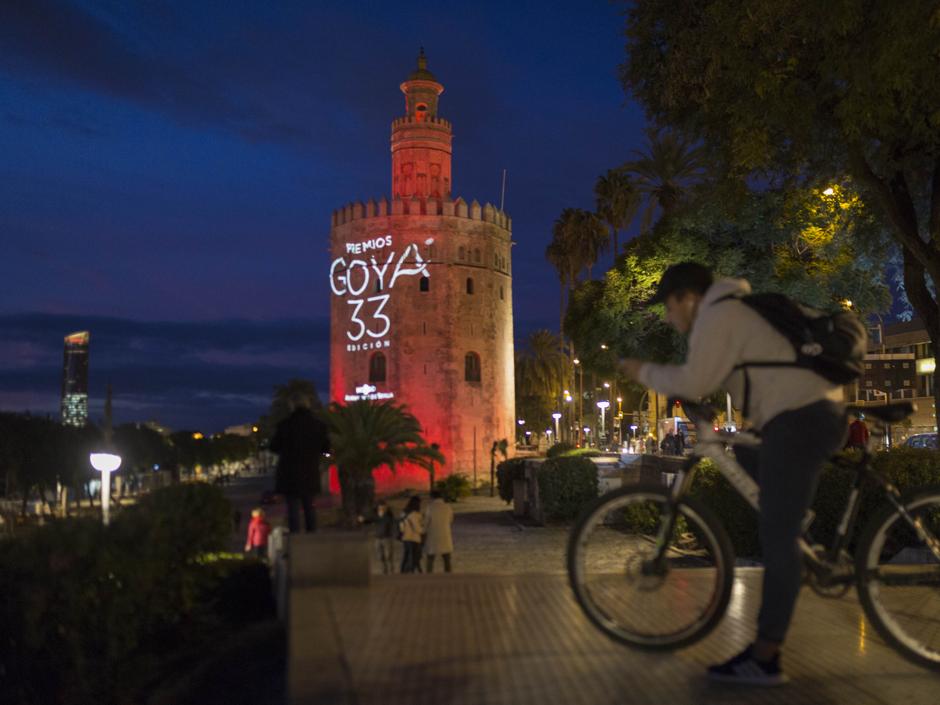El mitin de los Goya
No pienso perderme los Goya porque no sé contra quién será este año el habitual mitin

En España hay ritualmente grandes mítines: el de cierre de campaña del PSOE, el del PP en Madrid y, si cae, algo en Vista Alegre de Podemos. Estos mítines los organizan los partidos y los pagan ellos, aunque sea con nuestro dinero a través de ... las subvenciones. Pero hay un mitin anual que, como suele decirse en Tertulianés, «tiene otro formato». Y es tan ritual como los que acabo de citar. Me refiero al mitin de la entrega de los premios Goya, donde todo el que se tiene por un genio del cine, al recoger su estatuilla si lo galardonan, se siente en la obligación de largar fiesta contra lo que se lleve ese año en la izquierda. Por no hablar de los propios presentadores de la gala, que interpretan un guión que tiene mucho de argumentario del día, como los que reciben los dirigentes de los partidos para que no se metan en contraflecha y sigan el canto llano de lo que hay que decir contra el adversario.
Los mítines de entrega de los premios Goya son ya tan antiguos como el hilo negro. Empezaron cuando a algún genio de la propaganda, en la que la izquierda española es de Oscar al mejor guión, se le ocurrió convertir la ceremonia de la entrega en un mitin contra Aznar, entonces presidente, y contra la guerra de Irak, de la que todavía Zapatero no había retirado a nuestras tropas en menos de horas veinticuatro nada más ser investido. Aunque en la invitación a la gala ponía, supongo, que la etiqueta era esmoquin para los caballeros y traje largo para las señoras, lo que fue obligatorio en verdad fue la pegatina del «No a la guerra», que todo el mundo lució y que TVE llevó en directo a todos los hogares españoles.
Este año la entrega de los premios Goya sale de Madrid y la ceremonia de los que se ponen la camiseta negra en vez del esmoquin (porque es más progre) se celebrará en Sevilla. Donde hay una partida importante de catetos contentísimos con que los premios Goya (sin premio) vengan a su tierra. Hasta han puesto a la Torre del Oro al servicio de los Goya, como pantalla para una proyección con el título de los premios e iluminándola de rojo. Color más adecuado no han podido hallar. Los Goya, como la Academia de Cine que los otorga, como el subvencionadísimo cinematógrafo nacional que casi nadie ve, está en manos de la izquierda. Y hasta hemos exportado el modelo Goya a Estados Unidos, donde la entrega de los Oscar también suele convertirse en un mitin contra algo derechoso. Hasta el punto de que oí el otro día que un actor nominado este año para un Oscar lo tenía muy difícil, porque había hecho campaña a favor de Trump.
No sé cuánto nos cuesta cada año que por TVE una serie de engreídos que se creen genios del cine celebren su habitual mitin contra lo que le interese en ese momento al PSOE, a IU o a Podemos, en cuyas estribaciones andar suelen. Debe de ser una cifra bastante superior a los ridículos 65.000 euros que los Presupuestos del Estado consignan para la Tauromaquia. De otra forma no me explico que anden ya poniendo los paños calientes de que los Goya van dejar en Sevilla un lucro de cinco millones de euros, ni uno más ni uno menos: ya lo saben con toda exactitud, como los coches que van a moverse en la próxima Operación Salida de las vacaciones de Semana Santa. No pienso perderme los premios Goya porque no sé contra quién será este año el habitual mitin político en que se convierten. Contra el PP y Rajoy ya no, porque está en el Gobierno el PSOE y a lo mejor hasta Sánchez coge el Falcon y viene a Sevilla, codo con codo con sus huestes. Contra el PSOE, desde luego que no será. ¿Será contra los taxistas que tienen «acolapsado» Madrid ante la dejación del Gobierno? Lo dudo. No sé si se admiten apuestas, pero me pongo lo que sea a que este año la gala de los Goya será un horterísimo y pretencioso mitin contra Vox.
Esta funcionalidad es sólo para suscriptores
Suscribete
Esta funcionalidad es sólo para suscriptores
Suscribete